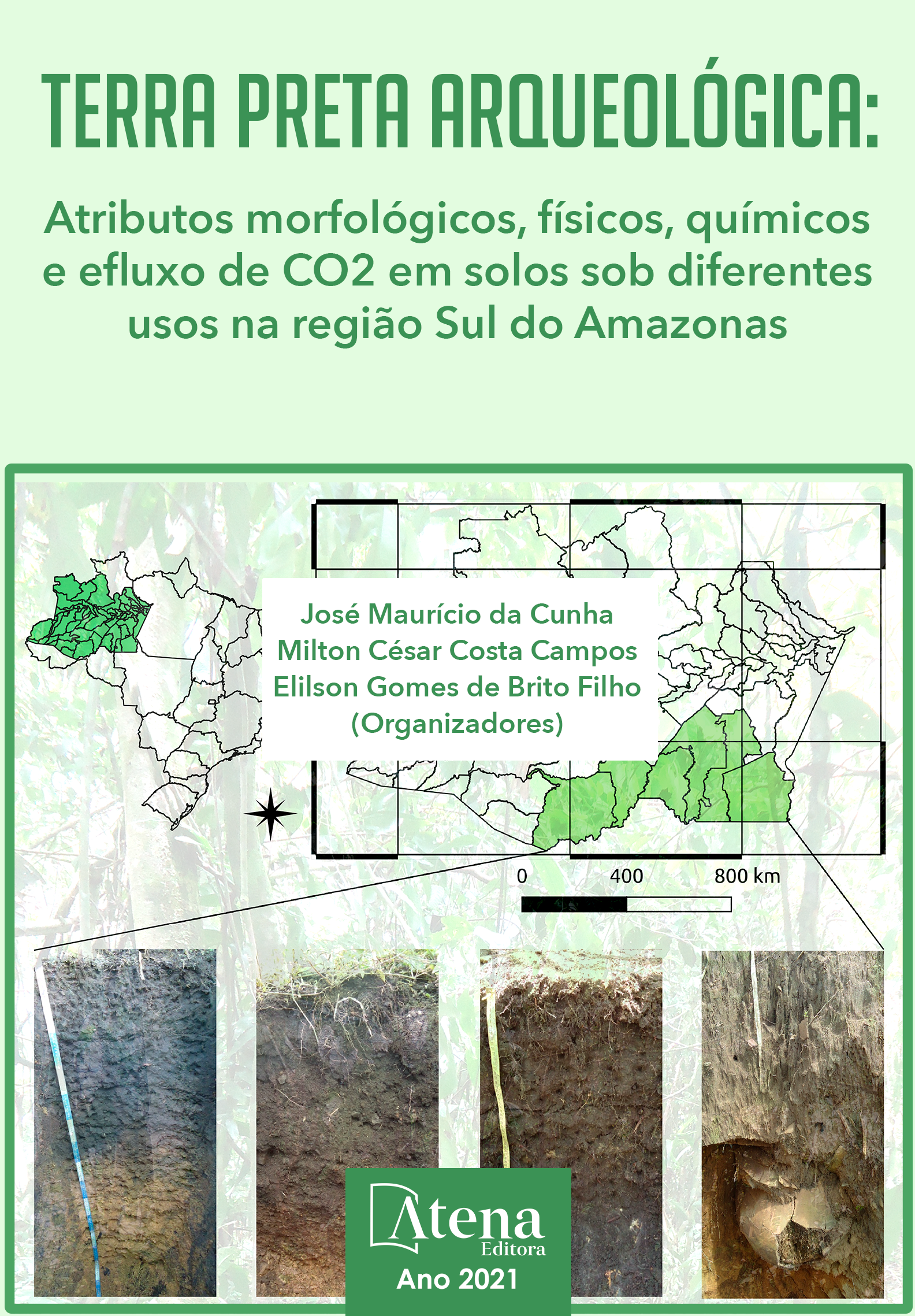
14. VARIAÇÃO ESPACIAL DE ATRIBUTOS QUÍMICOS EM TERRA PRETA ARQUEOLÓGICA SOB CULTIVO DE CACAU NA AMAZONIA OCIDENTAL
As Terras Pretas Arqueológicas (TPAs) são solos de fertilidade que notoriamente são superiores à grande maioria dos solos típicos da região amazônica. Assim, o uso das TPAs intensificou-se devido às características químicas apresentadas por esses solos, como a alta concentração de nutrientes (fósforo, cálcio, magnésio). Nesse sentido, o objetivo deste estudo foi avaliar a distribuição espacial dos atributos químicos do solo em uma área de Terra Preta Arqueológica sob cultivo de cacau no município de Apuí (AM). O mapeamento de uma malha de 42 x 88 m, com espaçamento irregular de 6 x 8 m, totalizando 88 pontos, foi realizado e, em seguida, foram coletadas amostras de solo nas profundidades de 0,0-0,05; 0,05-0,10; (pH, O.C, Sto. C, (H + Al), P, K, Ca, Mg, SB, CEC e V%). Os dados foram analisados por meio de técnicas estatísticas descritivas e geoestatísticas. Os valores médios e medianos foram ajustados aos valores próximos, indicando distribuição normal, enquanto os atributos químicos do solo foram ajustados aos modelos de semivariogramas esféricos e exponenciais. A maioria dos atributos apresentou coeficiente de variação (CV) entre 12,1 e 60%, caracterizada como variabilidade média, as variáveis do estudo apresentaram diferentes faixas e a maioria teve forte dependência espacial. As técnicas geoestatísticas utilizadas permitiram os ajustes dos modelos teóricos que melhor representaram a semivariância experimental, possibilitando a construção de mapas temáticos da distribuição espacial dos valores dos atributos da área estudada.
14. VARIAÇÃO ESPACIAL DE ATRIBUTOS QUÍMICOS EM TERRA PRETA ARQUEOLÓGICA SOB CULTIVO DE CACAU NA AMAZONIA OCIDENTAL
-
DOI: 10.22533/at.ed.20021070714
-
Palavras-chave: Atributos do solo, Estatística descritiva, Geoestatística, Apuí, Distribuição espacial.
-
Keywords: Soil attributes, Descriptive statistics, Geostatistics, Apuí, Spatial distribution.
-
Abstract:
Archeological Dark Earths (ADEs) are fertility soils that are notoriously superior to the vast majority of soils typical of the Amazon region. The study on ADEs has intensified due to the goodcharacteristics presented by these soils, such as high concentration of nutrients (phosphorus, calcium, magnesium). In this sense, the aim of this study was to evaluate the spatial distribution of soil chemical attributes in an area of black archeological earth soil under cocoa cultivation in the municipality of Apuí (AM). The mapping of a 42 x 88 m mesh, with irregular spacing of 6 x 8 m, totaling 88 points, was carried out, and then soil samples were collected at depths of 0.0-0.05; 0.05-0.10; (pH, O.C, Sto C, (H+Al), P, K, Ca, Mg, SB, CEC and V%). Data were analyzed using descriptive and geostatistical statistics techniques. The mean and median values were adjusted to the near values, indicating normal distribution, while the soil chemical attributes were adjusted to the spherical and exponential semivariograms models. The majority of the attributes presented coefficient of variation (CV) between 12.1 and 60%, characterized as average variability, the variables in the study presented different ranges and most of them had a strong spatial dependence. The geostatistical techniques used allowed the adjustments of the theoretical models that best represented the experimental semivariance, thus enabling the construction of thematic maps of the spatial distribution of the values of the attributes of the studied area.
-
Número de páginas: 23
- Roneres Deniz Barbosa
- Alan Ferreira Leite De Lima
- Emily Lira Simões
- Elilson Gomes De Brito Filho
- Milton César Costa Campos
- Bruno Campos Mantovanelli
- Douglas Marcelo Pinheiro Da Silva
- Fernando Gomes De Souza
- José Maurício da Cunha


